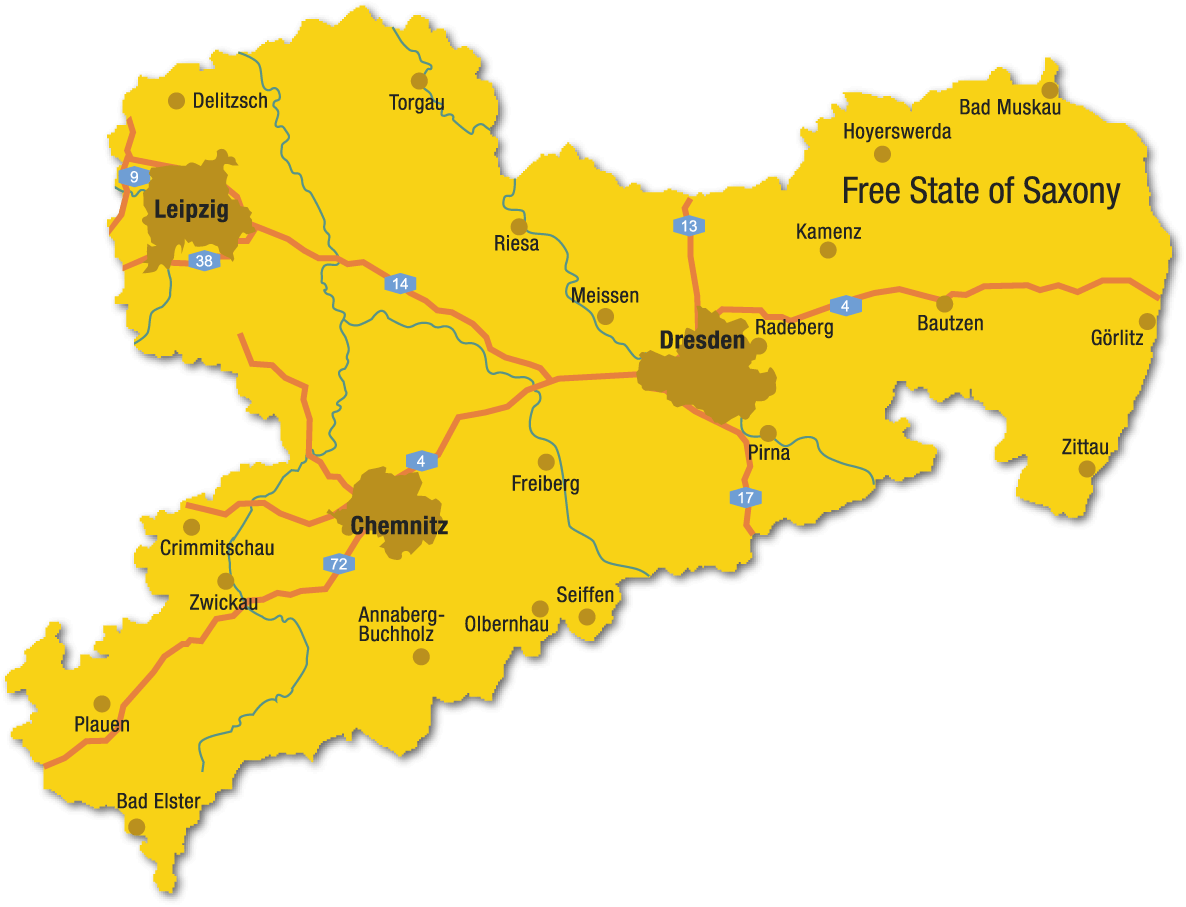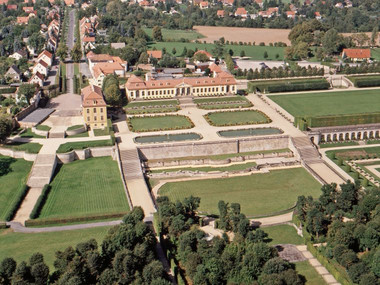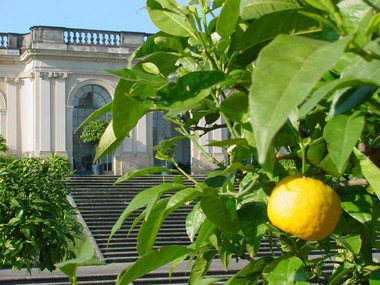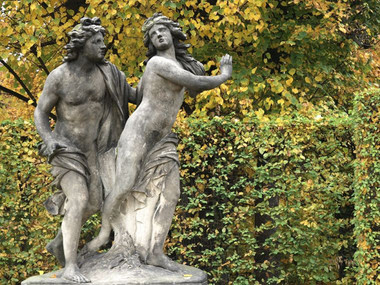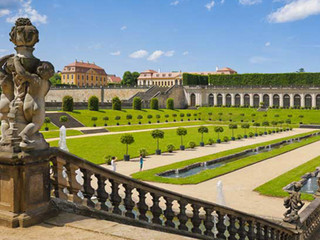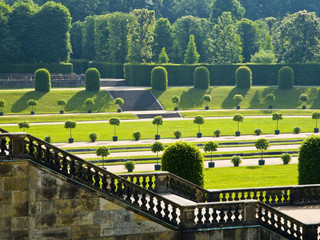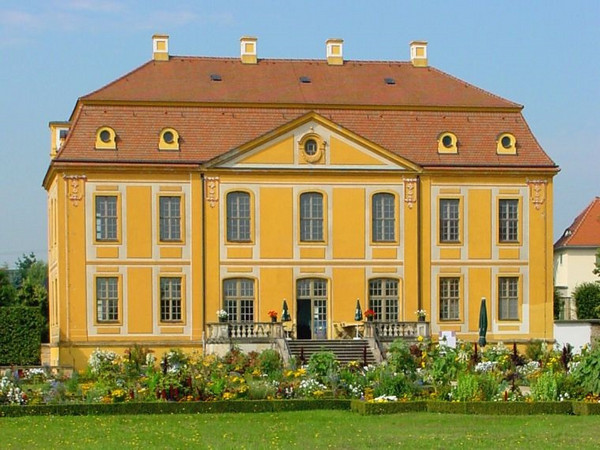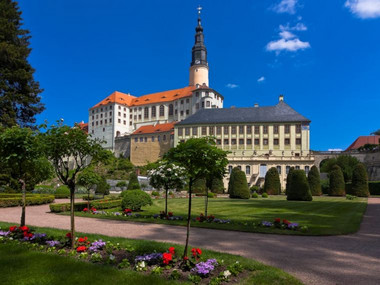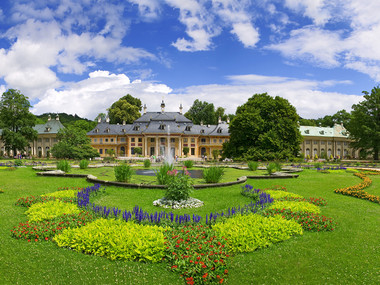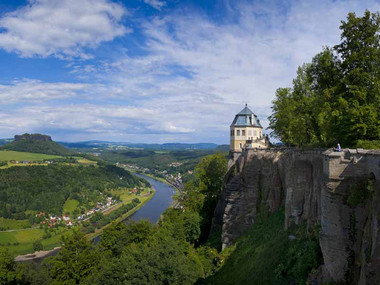A New Garden Was Born
In 1719, August Christoph Count von Wackerbarth commissioned the Saxon Court Master Builder Johann Christoph Knoeffel with building his place for retirement. Grosssedlitz – only two hours away from Dresden in those times – ideally suggested itself for that purpose. As up to 1,000 soldiers were involved in the building of the retreat at the same time, the Palace could be completed in 1720 und the Upper Orangery in 1721. In 1723, Augustus the Strong bought the Garden from the former Adjutant General of the Saxon Army, who officially continued to build it – but after the King’s plans.
Redesign under Augustus the Strong
The festivities for the Polish Order of the White Eagle were to be held at Grosssedlitz. For that purpose, about 400 horses had to be taken care of at the nearby manor. And the entire property was completely redesigned, as the Garden and Palace planned by von Wackerbarth proved to be too small. The Palace and the Upper Orangery were to be torn down in favor of a central palace complex. In addition to Knoeffel, there wer also Matthaeus Daniel Poeppelmann and Zacharias Longeluene, who worked on the Baroque Garden. In 1727, the Lower Orangery was completed. The Garden had by then reached today’s extension. In the same year, Augustus the Strong celebrated the festivities for the Polish Order of the White Eagle at Grosssedlitz for the first timed.
An Unfinished Estate
In the following years, Augustus the Strong lost interest in his Saxon palaces. In 1728, he abandoned the building of the central Palace, and in 1732 all building measures on the estate were suspended. The forest-side cascade remained unfinished, and the Baroque Garden now covers only about one third of its projected extension. However, until 1756, Augustus the Strong’s son celebrated the festivities for the Polish Order of the White Eagle at Grosssedlitz another twelve times.
Decay and Beginning Restoration Works
From 1745 to 1813, armed conflicts caused considerable damage to the Baroque Garden. During that time, the royals used Grosssedlitz only sporadically, which is why the estate did not see any changes in the taste of the various times. Extensive restoration was undertaken during the reign of King John. The Lower Orangery was converted and received modern warm-air heating. The Palace, Frederick’s Castle, had to be demolished in 1871. The new building could not be financed entirely, so that today only the eastern wing can be seen. Just the basements of the middle building have remained. Frederick’s Castle became Frederick’s Little Palace.
Bitter Loss
Until 1928, the two Orangeries housed potted plants, parts of which still originated from Augustus the Strong. In the winter of 1928/29, all the plant stock froze in. Between 1918 and 1990, several property owners again and again initiated restoration measures. Especially Herrmann Schuettauf improved the care for the plants and Baroque structures between 1929 and early 1950. He also introduced the colorful planting of the flowerbeds.
Großsedlitz Regains Its Old Splendor
Further restoration followed after World War II, but the decay could only be slowed down. In 1992, the Baroque Garden became the property of the Free State of Saxony and comprehensive repair and reconstruction work set in. After completing the Lower and Upper Orangeries, 145 bitter orange saplings and about 300 potted plants were purchased. They now adorn the Garden in summer again – just like in times of Augustus the Strong. Thus, Grosssedlitz has the largest collection of bitter orange trees in the German-speaking lands. The valuable sculptures have been restored or replaced by copies. Today, the Garden Festival, always held on the first weekend of August, commemorates the festivities for the Polish Order of the White Eagle.
Contact
Grosssedlitz Baroque Garden
Parkstraße 85 | 01809 Heidenau
Property of State Palaces, Castles and Gardens of Saxony, non profit
+49 (0) 3529 5639-0
grosssedlitz@schloesserland-sachsen.de
Opening hours
Subject to modifications.
Ticket rates
- Full rate 5,00 EUR
- Reduced rate 4,00 EUR
Subject to modifications.
